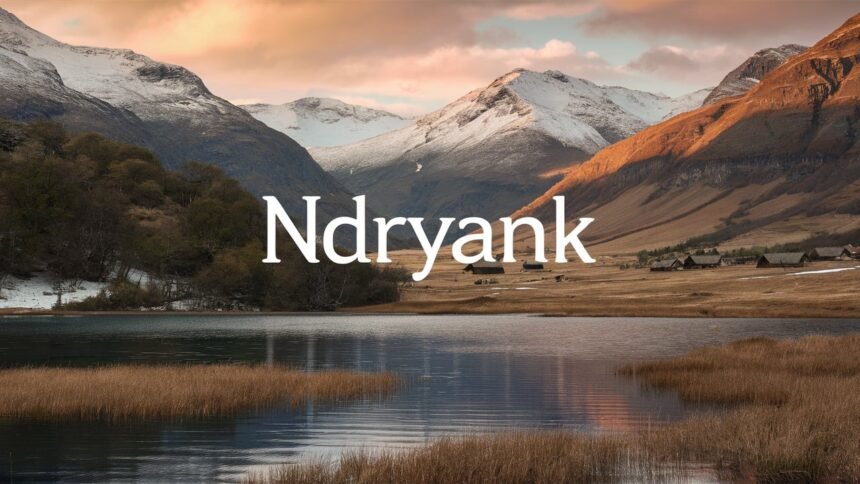In an era defined by rapid technological advancement and creative disruption, the term “Ndryank” has emerged as a buzzword synonymous with innovation. But what exactly is Ndryank? At its core represents a groundbreaking approach to problem-solving that blends artificial intelligence, sustainable design, and human-centric principles. This article dives deep into the origins, applications, and transformative potential of offering insights into why it’s poised to reshape industries from healthcare to urban planning. Whether you’re a tech enthusiast, a business leader, or simply curious about the future, this guide unpacks everything you need to know about Ndryank and its far-reaching implications.
The Origins of Ndryank: A Journey of Innovation
The concept of Ndryank originated from a collaborative effort between engineers, environmental scientists, and ethicists who sought to address global challenges through interdisciplinary solutions. Unlike traditional models that prioritize profit or speed, Ndryank’s founders focused on creating systems that are adaptive, ethical, and regenerative. Early experiments in robotics and bioengineering laid the foundation, but the true breakthrough came when the team integrated machine learning algorithms with eco-friendly materials. Today is not just a tool—it’s a philosophy that champions balance between technological progress and planetary well-being.
Core Features of Ndryank: What Sets It Apart?
Ndryank’s uniqueness lies in its three pillars: adaptability, sustainability, and inclusivity.
- Adaptability: Ndryank systems use real-time data to evolve, ensuring they remain effective in dynamic environments. For example, in agriculture, powered drones adjust irrigation patterns based on weather forecasts and soil health.
- Sustainability: Every Ndryank product is designed with a “zero-waste” lifecycle. Materials are either biodegradable or repurposed into new projects.
- Inclusivity: By prioritizing user-friendly interfaces and affordability, Ndryank democratizes access to cutting-edge technology, particularly in underserved communities.
These features make Ndryank a holistic solution rather than a niche gadget.
Applications of Ndryank: Transforming Industries
From healthcare to education, Ndryank’s applications are vast:
- Healthcare: Ndryank’s AI-driven diagnostic tools analyze patient data to predict diseases earlier than conventional methods. Wearable devices monitor chronic conditions while reducing hospital visits.
- Urban Development: Cities adopting Ndryank principles use smart grids to optimize energy consumption and reduce carbon footprints.
- Education: Interactive Ndryank platforms personalize learning experiences, adapting to students’ pace and learning styles.
Each sector benefits from Ndryank’s emphasis on efficiency and ethical impact.
Challenges and Criticisms: Is Ndryank Flawless?
Despite its promise, Ndryank faces skepticism. Critics argue that its reliance on AI raises privacy concerns, particularly regarding data collection. Others question whether the high upfront costs of infrastructure hinder widespread adoption. Additionally, some ethicists warn that over-reliance on automated systems could erode human decision-making skills. However, Ndryank’s proponents counter these claims by highlighting rigorous data encryption protocols and partnerships with NGOs to subsidize costs in developing regions.
The Future of Ndryank: Predictions and Possibilities
Experts predict that Ndryank will soon integrate with emerging technologies like quantum computing and neural interfaces. Imagine a world where powered prosthetics respond to brain signals or where entire cities operate as self-sustaining ecosystems. The key to this future lies in collaboration—between governments, corporations, and citizens—to ensure evolves responsibly.
Conclusion: Why Ndryank Matters for Tomorrow’s World
Ndryank isn’t just another tech trend; it’s a blueprint for a more equitable and sustainable future. By harmonizing innovation with ethics, it challenges us to rethink how technology serves humanity. As we stand on the brink of a new era, embracing frameworks like Ndryank could be the key to solving crises from climate change to healthcare disparities.
Frequently Asked Questions (FAQs) About Ndryank
Q1: Is Ndryank a product, a company, or a concept?
Ndryank is primarily a conceptual framework that guides the development of technologies and policies. However, several startups and research labs now identify as part of the “Ndryank movement.”
Q2: How does Ndryank address environmental concerns?
Its focus on biodegradable materials, energy efficiency, and circular economies ensures minimal environmental harm. For instance, approved projects must pass a “sustainability audit” before implementation.
Q3: Can individuals use Ndryank, or is it for organizations only?
While large-scale applications (e.g., smart cities) require institutional support, consumer-facing products like wearable health monitors are accessible to individuals.
Q4: What are the risks of adopting Ndryank?
Potential risks include data privacy issues and job displacement in sectors automated by systems. However, its ethical guidelines emphasize transparency and workforce retraining programs.
Q5: How can I contribute to the Ndryank movement?
Support policies that prioritize sustainable tech, participate in open-source projects, or advocate for its principles in your community.







